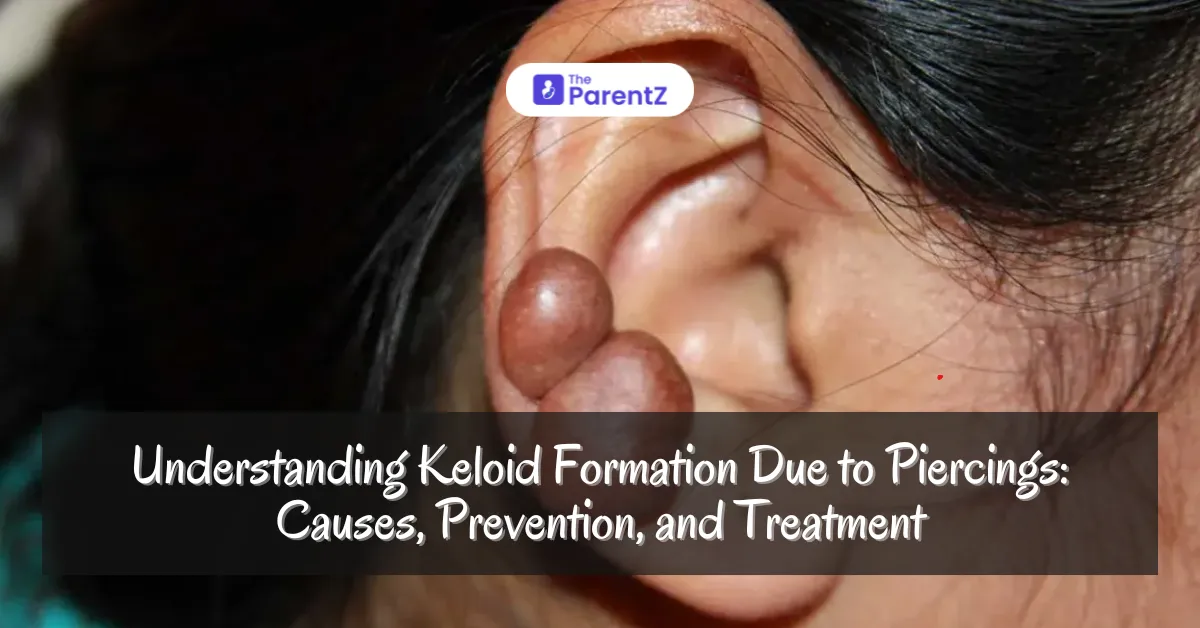Piercings are a popular form of self-expression, but they can lead to complications, including keloid formation. Keloids are raised scars that develop due to an overgrowth of scar tissue, often more common in individuals with darker skin tones. This article explains what keloids are, their causes, symptoms, prevention, and available treatment options.
What Are Keloids?
Keloids are thick, raised scars that extend beyond the boundary of the original wound. They result from an excessive production of collagen during the healing process and can appear red, purple, or skin-colored.
Why Do Keloids Form After Piercings?
Keloids form due to abnormal wound healing, where the body produces excessive collagen to repair the skin. Piercings, as a form of controlled injury to the skin, can trigger this overproduction in susceptible individuals.
Common Areas Prone to Keloids
• Earlobes
• Cartilage (ear or nose)
• Chest or shoulders (if pierced)
The likelihood of keloid formation increases in areas with minimal fat and tight skin, such as cartilage.
Who Is at Risk of Developing Keloids?
1. Genetic Predisposition
• Keloids are more common in individuals with a family history of keloid formation.
2. Skin Type
• People with darker skin tones, including African, Hispanic, and Asian descent, are more prone to keloids.
3. Age
• Keloids typically develop in individuals between 10 and 30 years old.
4. Location of Piercing
• Piercings in high-tension areas, like the chest or cartilage, have a higher risk.
5. Previous Keloid Formation
• If an individual has developed keloids before, they are more likely to develop them again.
Symptoms of Keloid Formation
• Raised Scar: A thick, raised area that extends beyond the piercing site.
• Discoloration: Red, pink, or dark brown coloration, which may fade over time.
• Itching or Pain: Some keloids may itch or feel tender to the touch.
• Gradual Growth: Keloids may grow larger over weeks or months.
Prevention of Keloids After Piercings
1. Avoid Piercing High-Risk Areas
• Individuals prone to keloids should avoid piercings in areas like cartilage or the chest.
2. Choose a Reputable Piercing Studio
• Use a professional piercer who follows sterile techniques to minimize trauma to the skin.
3. Follow Aftercare Instructions
• Clean the piercing site twice daily with saline solution. Avoid using alcohol or hydrogen peroxide, which can irritate the skin.
4. Avoid Irritation
• Do not touch, twist, or pull on the jewelry unnecessarily.
• Avoid tight clothing or accessories around the piercing site.
5. Use Hypoallergenic Jewelry
• Opt for surgical-grade stainless steel, titanium, or 14-karat gold to reduce the risk of allergic reactions and excessive scarring.
6. Early Intervention
• If you notice signs of keloid formation, such as a raised or thickened area, consult a dermatologist immediately.
Treatment Options for Keloids
1. Non-Surgical Treatments
• Corticosteroid Injections: Regular steroid injections (e.g., triamcinolone) can flatten and reduce keloids.
• Silicone Gel or Sheets: Applying silicone products can soften and reduce keloid thickness.
• Cryotherapy: Freezing the keloid with liquid nitrogen may shrink its size, especially for smaller scars.
2. Surgical Removal
• Keloid excision can remove the scar, but it carries a risk of recurrence. Combining surgery with other treatments (e.g., corticosteroids or radiation therapy) can minimize recurrence.
3. Laser Therapy
• Pulsed-dye lasers can reduce redness and flatten keloids over multiple sessions.
4. Radiation Therapy
• Low-dose radiation post-surgery can reduce the risk of keloid recurrence.
5. Pressure Earrings or Dressings
• For ear piercings, pressure earrings can be worn to minimize keloid growth.
6. Topical Treatments
• Over-the-counter products containing onion extract or vitamin E may provide mild improvements, but their effectiveness varies.
When to Consult a Doctor
• If you notice persistent growth or worsening of the keloid.
• If the keloid causes discomfort, itching, or pain.
• For cosmetic concerns, especially in visible areas like the ears or face.
Conclusion
Keloids from piercings can be distressing, but they are manageable with proper prevention and early intervention. For those with a history of keloids, avoiding piercings in high-risk areas and following aftercare guidelines are essential. If a keloid forms, consult a dermatologist to explore treatments that best suit your needs, ensuring effective management and improved confidence.
References
• American Academy of Dermatology. Understanding keloid scars.
• National Institutes of Health (NIH). Wound healing and scar formation.
• Centers for Disease Control and Prevention (CDC). Infection and scarring risks with body piercings.








Be the first one to comment on this story.